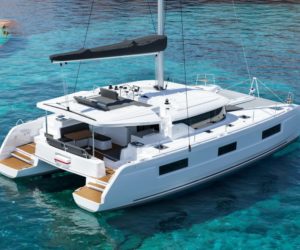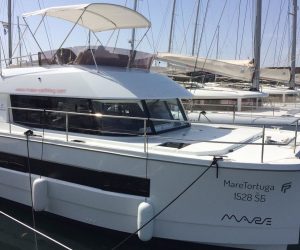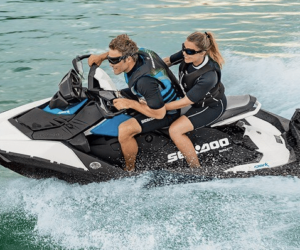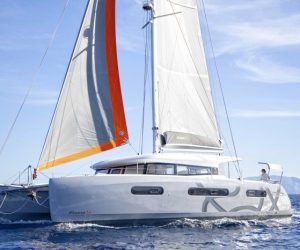Cycling and sailing in Istria
Combine sailing and cycling: The best routes along the Istrian coast

Why sailing and cycling in Istria?
The combination of sailing and cycling allows you to experience the beauty of Istria from both the sea and the land. Whilst on the water, you have the freedom to explore secluded bays and swim in crystal-clear waters. On land, cycle paths await you, taking you through historic towns, Mediterranean forests and along the picturesque coastline. This mix of maritime adventures and active explorations on land makes Istria a perfect destination for active holidaymakers.
The best sailing and cycling routes along the coast of Istria
1. Poreč to Rovinj
This route is ideal for beginners and offers a perfect balance between sailing and cycling. Start in Poreč, a town with a rich history and beautiful beaches. Sail along the coast to Rovinj, one of the most picturesque towns in Istria. On the way, you have the opportunity to take a break on one of the many small islands. After arriving in Rovinj, hop on your bike and explore the narrow streets of the old town centre and the nearby Zlatni Rt Nature Park.
Highlights:
- The UNESCO-protected Euphrasian Basilica in Poreč
- The old town centre of Rovinj with its Venetian influences
- The Zlatni Rt Nature Park, a paradise for cyclists
2. Vrsar to Lim Fjord
The Lim Fjord, an impressive bay that reaches deep inland, is a highlight of this route. Start in Vrsar, a charming fishing village, and sail along the coast to the entrance of the Lim Fjord. There you can anchor your sailing boat and explore the surrounding forests and hills by bike. The ascent rewards you with a breathtaking view over the fjord and the surrounding landscape.
Highlights:
- The picturesque old town of Vrsar
- The Lim Fjord with its breathtaking nature
- Local specialities such as fresh oysters and mussels in the restaurants by the fjord
3. Medulin to Premantura and Cape Kamenjak
For those looking for a more challenging route, the route from Medulin to Premantura and on to Cape Kamenjak is ideal. Medulin is known for its beautiful beaches and crystal-clear water. From here you sail to Premantura, the southernmost point of Istria. After mooring your boat in Premantura, continue by bike to Cape Kamenjak, one of Croatia’s most beautiful nature reserves. Here you can cycle along well-signposted paths through the Mediterranean vegetation and discover the spectacular cliffs and hidden bays.
Highlights:
-
- The picturesque bays and beaches of Medulin
- The Cape Kamenjak nature reserve with its wild landscapes
- The opportunity to observe rare plants and animals while cycling
Practical tips for your journey
1. Planning and equipment
For a smooth journey, it is important to plan your route in advance. Make sure you have the right equipment for both sailing and cycling. Lightweight but sturdy cycling equipment and waterproof bags are essential. It can also be helpful to book a local guide to help you with navigation and organisation.
2. Best time to travel
The best time to explore Istria is from April to October, when the weather is mild and the sea is calm. In the summer months of July and August, however, it can get very hot, so it is advisable to sail and cycle early in the morning or late in the afternoon.
3. Safety
You should always pay attention to your safety both on the water and on land. Always wear a lifejacket when sailing and keep up to date with the weather conditions. When cycling, wearing a helmet is mandatory and it is advisable to always have enough water and snacks with you.
Tips for budding sailors
- Clothing: Wear comfortable and weatherproof clothing. A good sun cream, sunglasses and a hat are also important to protect yourself from the sun.
- Fitness: Sailing requires a certain level of physical fitness. A regular fitness programme can be helpful in building up the necessary stamina and strength.
- Theory: Take the opportunity to familiarise yourself with the theory of sailing. Books and online resources provide valuable information on navigation, meteorology and seamanship.
- Practical experience: practice makes perfect. Take every opportunity to be on the water and improve your skills.
Our summary
The combination of sailing and cycling along the coast of Istria offers an unforgettable experience that brings you closer to the nature and culture of this beautiful region. From picturesque harbour towns to hidden coves and spectacular views, Istria has everything an adventurer’s heart desires. Plan your trip well and enjoy the perfect mix of relaxation and activity on the Croatian Adriatic.


























